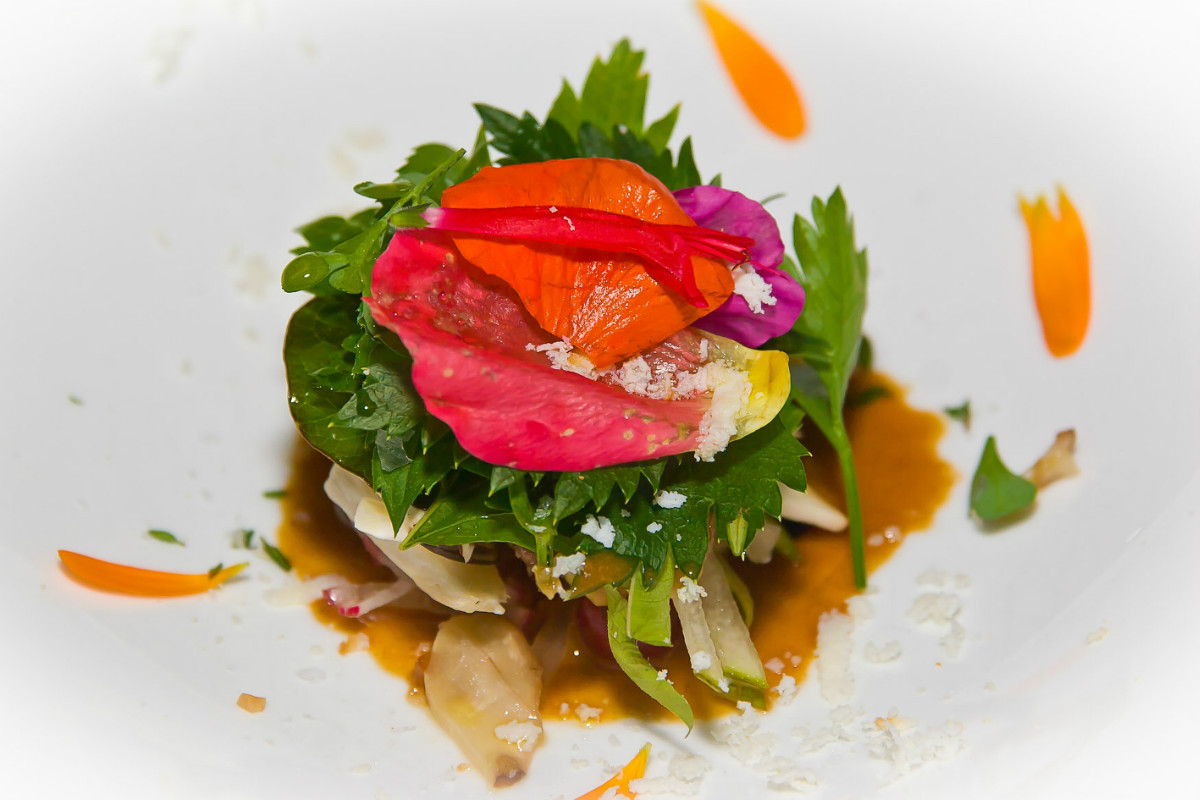
International cuisine's fashion accessory
What is international cuisine’s latest accessory? Which is the hottest fashion food to emerge into the spotlight?
This discovery might be new to us but its roots go back many hundreds of years. It is easily accessible, tasty, fresh and found on your doorstep. Many recipes are available to demonstrate how this ingredient is more than just a ‘pretty face’ adding unusual colours and flavours to delight the eye and tantalise the taste buds.
The skill, the art, is in selecting the right flavour for the dish. No longer relegated to simply decorating the table, edible flowers, all 42 of them, have burst onto the scene as the ‘must have’ accompaniment to any dish, or even beverage.
140 BC was the first recorded mention of using flowers in a culinary sense with many different cultures introducing them into their traditional foods. You might have sampled stuffed squash blossoms in Italy and rose petals in Indian food. Daylily buds are used in oriental dishes and the Romans used mallow, roses and violets. Developed in France in the 17th century, one of the secret ingredients of the classic green liqueur, Chartreuse is reputed to be carnation petals.
Did you know that: bean blossoms have a sweet, beany flavour; borage tastes like cucumber; miniature pansies have a mild wintergreen taste; violets, roses and lavender add a sweet flavour to salads or desserts; an economic, though not as pungent alternative to saffron is the bright yellow calendula?
Two cookery books: Edible Flowers, which is full of recipes and ideas for cooking and eating flowers inspired by the contents of the author’s garden and the Forgotten Art of Flower Cookery first published in 1973 give lots of hints and tips about how to gather, prepare and use a wide range of flowers.
The range of flavour possibilities is surprising: spicy, herbaceous, floral, and fragrant. Edible petals appear in salads and teas, as garnishes for desserts and summer beverages. The creativity that they inspire is magical. Consider rolling spicy ones such as chive blossoms into handmade pasta dough. Homemade ice cream invites floral additions. Pickled nasturtium flower buds become a substitute for capers. The nasturtium’s peppery flavour is reminiscent of watercress.
Elderflowers can be made into a delicious syrup to add to fizzy water as can the humble dandelion which was one of the bitter herbs mentioned in The Bible. Give a chicken casserole an interesting twist by adding lavender flowers. Rosemary flowers are as tasty as the leaves, although slightly sweet.
The elderflower makes delicious ‘sparkling wine’ as does hawthorn blossom. Elderflower cakes accompanied by violet ice cream are an unusual treat.
Daisies make a great soup and the ox-eye variety puree well and perfectly partner new potatoes. Marigolds are very versatile: eat the petals or leaves, raw or blanched, fresh or dry, sweet or savoury providing they are prepared properly.
Need a light floral dressing? Look no further than rose petals pickled in vinegar! Or use rose petals as a sandwich filling; in a Rosehattan; to finesse a lobster salad; to make jam or crystallised petals or to mix into butter icing for a special cake. ‘May the Queen of flowers reign too in the kitchen’ (Anon).
Top tips for the safe use of this ingredient
Not all flowers are safe to eat, so start by researching information on edible flowers and plants ...
• Use flowers that you have grown yourself or that you have checked are safe to eat.
• Do not use flowers from a florist or nursery as they might have been treated with pesticides or other chemicals.
• Do not use flowers from the roadside or public parks as the former could be polluted by exhaust emissions and both could have been treated with pesticides or herbicides.
• Use only the petals. Remove the pistils and stamens before using.
• Allergy sufferers need to be most careful, trying out small quantities in case of side effects.
• Placing on moist paper towels in airtight containers then refrigerating will keep flowers fresh for up to 10 days.
• Limp flowers can be refreshed by ice water.